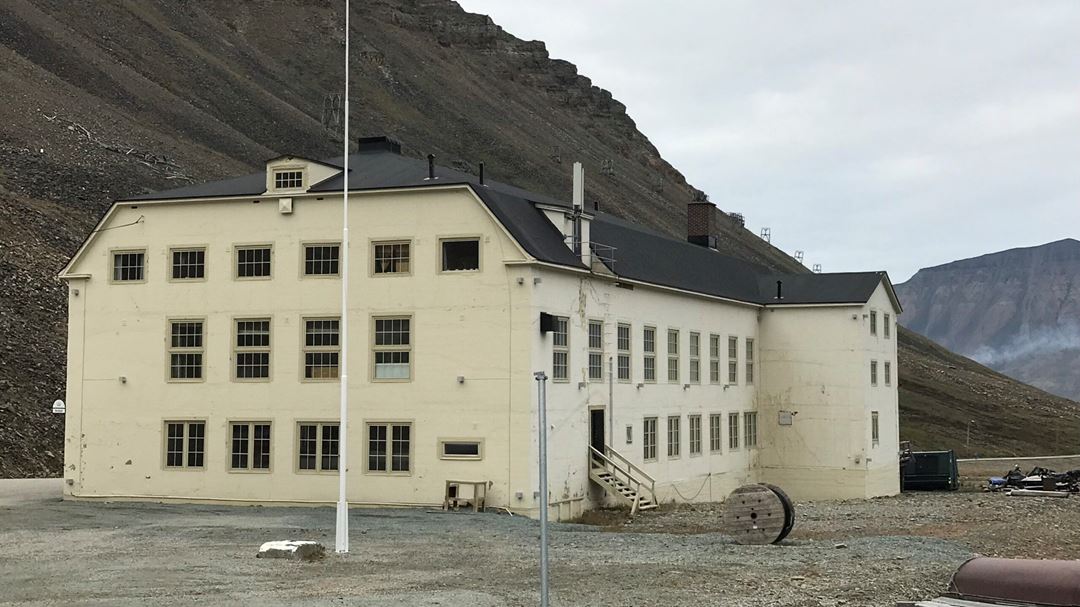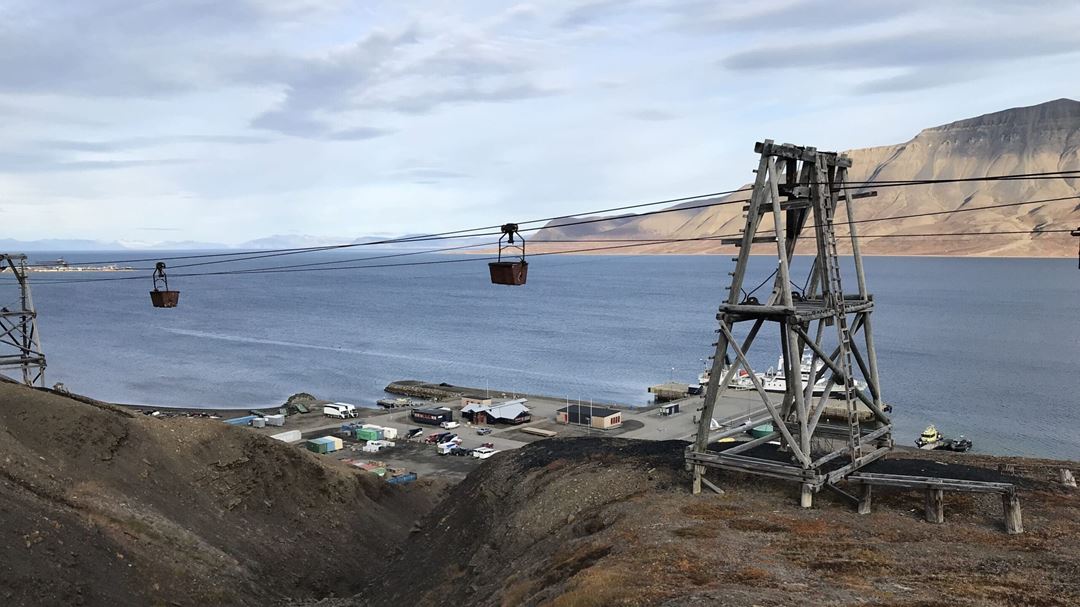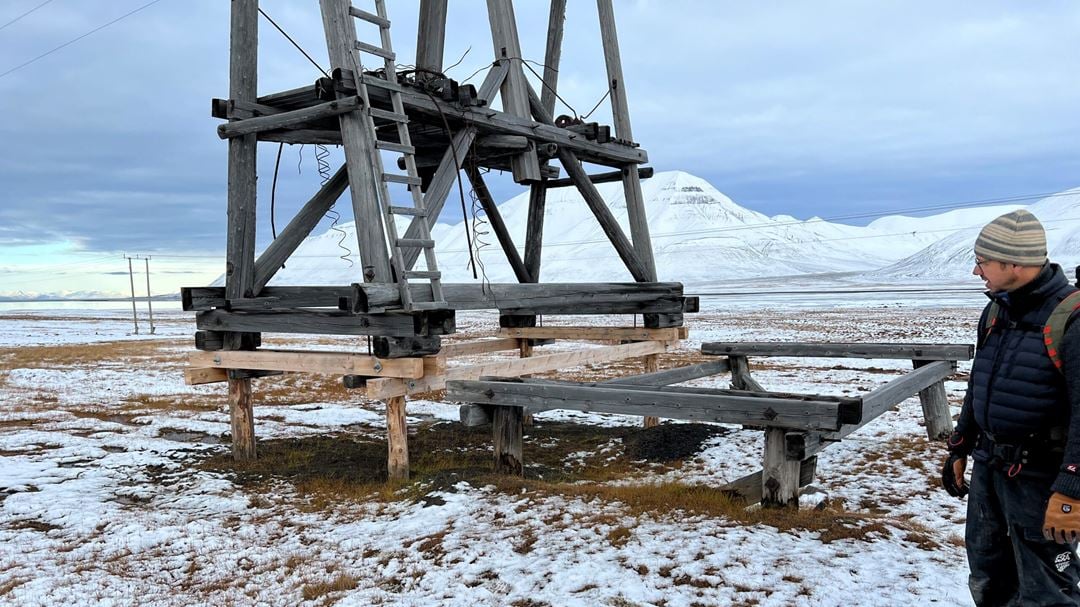Generally, cultural monuments and heritage may be defined as “material and immaterial remains of human activity in the past”. We have primarily focused on buildings and structures from the industrial period on Svalbard, specifically those dating from after 1900.
In this context, we refer to definitions of cultural heritage provided by several key documents, including the Convention Concerning the Protection of the World Cultural and Natural Heritage (UNESCO).
UNESCO’s definition includes “groups of buildings: groups of separate or connected buildings which, because of their architecture, their homogeneity or their place in the landscape, are of special value from the point of view of history, art or science”.
When working with cultural heritage in Norway, it is important to follow the definition in the Norwegian Standard NS-EN 16096:2012 “Conservation of Cultural Property. Condition Survey and Report of Built Cultural Heritage”, which defines cultural heritage as “tangible and intangible entities of significance to present and future generations”.
And when doing so in Svalbard, the Svalbard Environmental Protection Act (SEPA) defines cultural heritage as “all traces of human activity in the physical environment, including localities to which historical events are linked”.

Why is it important to preserve cultural monuments?
From a legal standpoint (cf. SEPA), cultural monuments on Svalbard predating 1946 are automatically protected, and certain objects – such as graves and burial sites – are protected regardless of age. Norway has both an obligation and a responsibility under international treaties to safeguard its cultural heritage.
As such, the question is not whether cultural monuments should be preserved, but how preservation is carried out. As in other parts of the world, it is neither economically nor practically feasible to preserve all heritage sites and objects in Svalbard for future generations.
It is necessary to prioritize which objects should be preserved and to what extent. This prioritization is based on transparent, and preferably objective, criteria established by the relevant authorities – such as age, uniqueness, representativeness, historical significance, and other relevant factors.
Preservation measures can range from minimal intervention, such as legal protection without physical action, to efforts aimed at slowing natural decay, all the way to full-scale restoration of a structure or object.
Cultural heritage protection at large, and more specifically the choice of monuments and degree of preservation, rest on values. In Norway, and indeed internationally, the values of a certain cultural monument are evaluated within three main categories: its knowledge, experience, and usage values. These broad categories can be broken down into concrete properties of the monument.
Values are shaped by cultural and social contexts. They are subject to critical discourse and evolve over time. What we prioritize today differs from the values of the past – and will undoubtedly change again in the future.
For this reason, it is essential to protect and preserve as much cultural heritage as possible, as we cannot predict what future generations may need in terms of knowledge, experience, or practical use.
What are some of the most significant cultural monuments in the region?
In the project PCCH-Arctic, we focused our research on cultural heritage in the most accessible and populated areas of Svalbard – specifically in Longyearbyen and its surroundings, as well as in Ny-Ålesund.
Our work centered on technical-industrial cultural heritage, particularly structures related to the region’s coal mining past.
While these are neither the only types of cultural monuments in Svalbard nor necessarily the most significant from a broader historical perspective, they are fundamental to understanding the development of present-day Longyearbyen and Ny-Ålesund.
As both communities have transitioned into a post-industrial era, the legacy of coal mining is becoming increasingly invisible and harder to interpret for both residents and visitors.
We also highlight the unique collection of buildings and structures in Hiorthhamn, a former mining settlement located near Longyearbyen. These monuments are important not only for their historical and architectural value, but also because they remain visible and accessible to the general public.

Hiorthhamn: A Historic Coal Mining Settlement
Hiorthhamn is a former coal mining settlement located on the northeast side of Adventfjorden, across from Longyearbyen. The mine was established in 1917 by DNKS, which acquired the assets of The Spitsbergen Coal & Trading Co. (SCTC). SCTC was the first company to conduct year-round coal mining on Svalbard (1905–1908) at Advent City, further north in Adventfjorden. In 1917, DNKS relocated the former SCTC buildings to Hiorthhamn, making it home to some of Svalbard’s oldest technical-industrial heritage objects. This makes Hiorthhamn an important cultural heritage site.
DNKS operated the mine until 1921 before declaring bankruptcy. Mining activity resumed briefly from 1938 to 1940 under a new company. During this period, the iconic Cable Car Station (Taubanestasjonen) was constructed. This automatically protected cultural monument is well preserved but currently faces immediate risk from accelerating coastal erosion. Hiorthhamn also contains a unique collection of historical buildings used for accommodation, industrial functions, and various practical needs, representing a rare, well-preserved early 20th-century mining settlement that survived World War II.
Ny-Ålesund: Mining Heritage and Polar History
Ny-Ålesund, established in 1917, is another Svalbard settlement shaped by its coal mining past. It contains a unique collection of 28 historical buildings, most of which remain in use today. Many of these structures have been restored over the past two to three decades. Some retain their original foundation solutions, while others have been placed on new foundations anchored deep into bedrock—approximately 10 meters below ground.
Among Ny-Ålesund’s iconic cultural heritage landmarks is the Luftskipsmasta (airship mast), erected for Roald Amundsen’s 1926 North Pole airship expedition and used by Umberto Nobile’s ill-fated expedition in 1928. Restoration work on the mast was carried out in 2025 when it was also placed on pile foundations anchored in bedrock), underscoring Ny-Ålesund’s ongoing commitment to preserving its rich industrial and polar exploration history.

What insights do they offer?
The history of coal mining in Longyearbyen starts in 1906 when Mine No. 1, the so-called “American mine” or 1A, and the settlement were established by the Arctic Coal Company (ACC), founded by the Boston based businessman, John Munroe Longyear.
In 1916 Norwegian interests acquired all the facilities and properties and formed Store Norske Spitsbergen Kulkompani AS (SNSK). Throughout the town’s history, ten coal mines have been in operation. Production in the last remaining mine, Mine 7, was closed on June 30 2025.
Longyearbyen remained a “company town” until 1976, when SNSK was nationalized by the Norwegian state. Over time, the local community modernized, and public services expanded. Local democracy was introduced in 2002 with the establishment of Longyearbyen Lokalstyre.
Several cultural heritage sites and objects preserve the memory of the company town era. Among the most accessible coal mining heritage sites in Longyearbyen are buildings from this period, including residential housing, offices, public facilities, workshops, and various industrial structures.
Notable examples include the housing barracks in Nybyen, the few remaining buildings in Sverdrupbyen, the community centre known as “Huset,” the old power plant, and “Funksjonermessen, now a part of the hotel Funken Lodge building complex.

Coal mining infrastructure in Longyearbyen also includes several structures connected to the extraction and transportation of coal, such as underground mines, buildings at the mine entrances, and an extensive system for moving coal from the mines to the sea.
The transportation system features approximately 200 cableway trestles, multiple tightening and turning stations, as well as the historic coal cableway central in Longyearbyen and the loading facility known as “Titankrana.”
Until 1987–1988, coal was transported in carriers suspended from cables supported by cableway trestles. Starting in 1988, transportation shifted to trucks, which was more economical.
Cableway trestles are vulnerable to various natural hazards, such as snow avalanches, permafrost degradation, and other environmental factors. Over time, their strength diminishes as the timber they are made from deteriorates, increasing the risk of structural collapse.
Additionally, urban development and the expansion of coal mining infrastructure have led to the removal of several trestles.
In the past decade, about 15 cableway trestles have been restored, while around 30 have been lost due to the factors mentioned above. Recent evaluations indicate a high risk of losing approximately 60 more trestles in the foreseeable future.

How is warming permafrost threatening historic sites and artifacts?
The cultural heritage objects discussed in this interview were originally constructed as infrastructure for coal mining. These buildings and structures were never intended to be permanent, but designed as temporary facilities to serve a specific industrial purpose.
At the time of their construction, engineering science, particularly in foundation design, was still in its early stages. Knowledge about permafrost conditions was also very limited, and many buildings were erected based largely on the builders’ practical experience.
Despite this, many of these structures have remarkably withstood the test of time—not only surviving long after mining operations ended, but also enduring several decades of a warming climate and thawing permafrost.
Still, climate change is having a significant impact, particularly through the active layer (the top layer of the permafrost that thaws every summer), as well as the warming and degradation of permafrost.
Depending on the ice content in the ground, this can cause vertical displacements of the foundations of cultural heritage structures, leading to uneven settling and, in some cases, collapse.
Warming permafrost also increases the risk of landslides in mountainous terrain, which can damage or destroy historical infrastructure. In addition, changing climate patterns may lead to more frequent snow avalanches, which have already caused damage to built heritage in some areas.
Overall, the climate change increases the risk of deterioration and destruction of technical-industrial cultural heritage through-out the Arctic.
How do researchers decide which heritage sites to save?
Research scientists, owners of heritage, the general public and public authorities do not always share the same priorities when it comes to preservation.
While many different cultural heritage objects may be equally significant from an antiquarian perspective, some – such as the Luftskipsmasta in Ny-Ålesund—may hold particular interest for the public or tourists and are therefore more likely to be prioritized for restoration.
Heritage in the form of standing buildings may have commercial or practical uses that lead owners to prioritize their preservation. In the case of cultural heritage owned by the state, relevant authorities follow specific guidelines and criteria for prioritization.
These include factors such as the object’s uniqueness, representativity, condition, current use, and other relevant considerations.
Researchers prioritize cultural heritage based on both scientific and practical considerations. In our projects, we focus on technical-industrial heritage objects that are significant to our industrial partners, who are responsible for their management.
A common feature of many of these sites is their exposure to serious risks from natural hazards, such as permafrost thaw and material degradation (e.g., timber and steel).
From a technical standpoint, risk assessments can help guide preservation priorities. The level of risk is determined by both the physical condition of the object and the likelihood of natural hazards, such as permafrost degradation, landslides, and coastal erosion.
Sites facing higher risk may be prioritized for monitoring, intervention, or preservation.

What efforts are being made to protect them?
These efforts are part of the ongoing work carried out by the organizations responsible for managing these heritage objects. Many of the structures have been restored in recent decades, often involving the replacement of foundations.
In some cases, the original foundations were restored; in other cases, modern foundation solutions (such as piles) were used. In all instances, the goal is to improve the structural stability of the object.
What innovative technologies are being used to monitor and mitigate the effects of climate change?
It will likely take some time before innovative technologies are actively used to monitor and mitigate the impacts of climate change on cultural heritage in the Arctic.
However, the first steps have already been taken. These include the monitoring of permafrost temperatures near selected cultural heritage sites, as well as the use of satellite technologies to detect landscape settlement and ground deformation from space.
From a technological perspective, the potential for applying these tools in heritage preservation is significant.
Has climate change led to any significant archaeological discoveries?
Unlike on the Norwegian mainland, where melting glaciers have revealed valuable prehistoric cultural remains – thawing and melting on Svalbard have mostly led to the deterioration and destruction of archaeological heritage.
Recent excavations show that very little organic material has been preserved, in contrast to the rich findings from earlier digs in the 1980s. Many of these sites are located along coastlines that are particularly vulnerable to erosion from waves and wind, and the impacts from human activity.
To our knowledge, no significant discoveries have been made in Svalbard as a direct result of a warming climate. On the contrary, the negative impacts of climate change on cultural heritage continue to be confirmed.
What challenges do you face in preserving cultural monuments in Svalbard?
Technologically, many structures are built on permafrost, which is warming due to climate change, making restoration especially difficult.
With regard to procedure and methods, non-authentic restoration methods may be more time- and cost-efficient, but permits to use such methods have not always been granted, and their use can indeed reduce the antiquarian value of the heritage.
Funding is a fundamental challenge since preservation and restoration in Svalbard are particularly expensive due to short working seasons, remote locations, and high logistics costs.

Have any discoveries in Svalbard intrigued you?
Recently, several cableway trestles in Longyearbyen were restored using modern pile foundations – a more time- and cost-efficient method than traditional authentic solutions.
This project, led by Store Norske Spitsbergen Kulkompani, involved installing new piles alongside the original shallow foundations, which remain underground.
Although piles were previously not permitted due to authenticity concerns, this approach offers a promising way to preserve more structures amid climate change and warming permafrost.
What message would you like to give to those exploring Svalbard for the first time?
Svalbard has indeed a unique cultural heritage landscape. This landscape is young and reflects human efforts and daily life of an extractive economy in the Arctic.
However, the natural pace of decay, amplified by climate change may erase many of these objects in the coming decades.
To be better prepared, we recommend learning about buildings and structures before your visit and acquaint yourself with the local regulations. Many protected monuments and remains are not obvious or easily recognizable as cultural heritage, so it is important to explore with great care and respect.
About the authors

Dr. Anatoly Sinitsyn is an experienced researcher and project leader specializing in civil engineering in the Arctic. With nearly two decades of work in conditions, he has worked with projects addressing coastal infrastructure, building foundations on permafrost, coastal erosion, and drinking water solutions. Recently, Anatoly has expanded his expertise to include the management of Arctic cultural heritage, bridging engineering and preservation.

Dr. Thor Bjørn Arlov is a historian with over 40 years of experience in Svalbard. Throughout his career, he has led numerous excursions and courses, combining his interest in cultural heritage with extensive research. Thor Bjørn has written and edited a wide range of books and papers on Svalbard’s history, sharing his knowledge through lectures and public talks.
This article was first published in AECO’s Knowledge Base for Guides.


